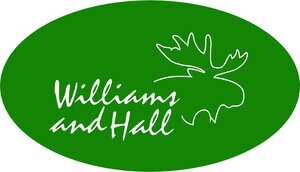Tips for Choosing a Great BWCA Campsite
Choosing a BWCA Campsite
Choosing a BWCA campsite is one of the most important decisions you make each day during your canoe trip. The Boundary Waters Canoe Area wilderness offers more than 1,200 campsites spread over more than 1,100 lakes and 1,200 miles of canoe routes. Every BWCA campsite has a fire grate and latrine. With so many choices, where do you start?
The Choices Begin with Pre-Trip Planning
Before you embark on a Boundary Waters canoe trip, you should have an idea of your route. There are many resources to help you with route selection. An outfitter, like Williams and Hall, can be helpful in route selection.
Once a route is selected, your maps become very handy. We prefer W.A. Fisher maps for their accuracy and detail. Virtually, every BWCA campsite is identified by a red dot on these maps. At Williams and Hall, we help our customers identify which of these red dots or campsites along your route are superior. We can also help you understand the BWCA rules and regulations.
Williams and hall outfitters bwca quetico ely mn
Tips For Choosing a BWCA Campsite
When you embark on your canoe trip, you may think you know where you will stay each night. However, things can change in the wilderness. Your group might alter its route. You might be delayed by weather. You might travel faster or slower than planned. As a result, you need to know how to choose a campsite while in the BWCA.
Tangible Campsite Factors to Consider
Is the site relatively flat? Flat sites are easier in every way.
Is there a flat, rock free place to set up tents? This helps for a good night sleep and keeping water out of the tent.
Do I have access to a nice breeze? Helps with the bugs and feels good.
Are there any trees to help provide shelter from wind and rain storms?
Is there a good place to hang bear bags? These should be 200 feet from tents for bear safety.
Is there a good place to put up a dining fly and set up the camp kitchen? Again, the kitchen ideally should be 200 feet from the tents for bear safety.
Do I have access to seasoned fire wood for my fire? Sometimes, you need to gather your firewood down the shoreline in your canoe.
Do I have access to good water for cooking and drinking? Shallow water should be avoided.
Do I have an easy place to land my canoe and a good place to store my canoe overnight?
bwca campsite kitchen
The Intangibles
The practical considerations are important. However, there are some intangibles to consider as well.
Views from the campsite
Good swimming water access
A clearing for star-gazing or a view of the northern lights
Privacy
One last thought. Always try to leave your campsite cleaner than when you arrived. Look for that little piece of litter in the dirt and dispose of it.
Paddle On. Be Free.
Kevin



